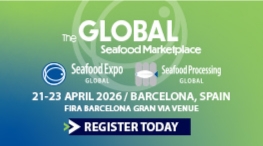The Mediterranean Action Plan of the UN Environment Programme (UNEP/MAP) was established in 1975 as a multilateral environmental collaboration framework in the context of the UNEP Regional Seas. Mediterranean countries and the European Community approved MAP to address common challenges of marine environmental degradation. Under the auspices of UNEP/MAP, the Convention for the Protection of the Marine Environment and the Coastal Region of the Mediterranean – known as the Barcelona Convention – was adopted in 1995. UNEP/MAP and the Contracting Parties to the Barcelona Convention: 21 Mediterranean countries and the European Union – have progressively built a uniquely comprehensive institutional, legal, and implementing framework integrating essential building blocks for sustainability in the Mediterranean.
Tatjana Hema is the Coordinator of the Mediterranean Action Plan of the UN Environment Programme. An Albanian national, Ms Hema worked in the National Environment Agency of Albania and served as Deputy Minister of Environment before joining the UN. She played different roles in the MAP Barcelona Convention Secretariat including that of Deputy Coordinator until her appointment as Coordinator. Here she describes the workings of the UNEP/MAP-Barcelona Convention system and some of its achievements.
The contracting parties to the Barcelona Convention currently are 21 Mediterranean countries and the European Union. What benefits do these countries derive from their membership of the convention?
When they voluntarily became Contracting Parties to the Barcelona Convention, the 21 countries and the European Union effectively took on legally binding obligations to protect marine and coastal ecosystems in the Mediterranean in a concerted fashion. In doing so, they put aside their differences, showed a remarkable sense of solidarity and focused on what mattered then and still matters now: addressing trans-boundary environmental challenges that, if left unchecked, could have devastated the Mediterranean region’s marine and coastal ecosystems. So, if we look at this in terms of benefits, I would point to the invaluable dividends that the current and next generations derive from healthy marine and coastal ecosystems that keep the Mediterranean Sea and coast alive and thriving. Benefits go beyond the fact that natural systems underpin important Blue Economy sectors. The Mediterranean Sea is essential to the economies, livelihoods and lifestyles of peoples living around its rim. For millennia, it has shaped the civilisations that rose on its shores and continues to be a fundamental part of what it means to be Mediterranean.
How can the convention contribute to protecting marine and coastal habitats and threatened species and monitoring the spread of invasive species?
This issue is regulated by the Protocol Concerning Specially Protected Areas and Biological Diversity in the Mediterranean (SPA/BD Protocol) to the Barcelona Convention, which promotes the identification, designation, and effective management of marine and coastal protected areas, including habitats which are in danger of disappearing and/or crucial to the survival, reproduction and recovery of endangered, threatened or endemic species of flora or fauna. The Protocol emphasizes the conservation and restoration of habitats such as seagrass beds, coralligenous assemblages, dark habitats, and wetlands, which are vital for the survival of various species. The SPA/BD Protocol also includes provisions to prevent, control and eradicate invasive species. It promotes measures like early detection and response systems, risk assessments, and the development of management strategies to prevent the introduction and spread of invasive species in marine and coastal areas.
The UNEP/MAP-Barcelona Convention system has achieved several notable successes since its inception in 1975, including the development of a regional action plan on marine litter and a protocol to prevent pollution from land-based sources. The convention has also helped to raise awareness about environmental issues in the region and promote international cooperation. What do you consider the major achievements of the Barcelona Convention since its establishment?
UNEP/MAP has gone a long way since its inception in 1975. It has made substantive contributions to the environment and development agenda in the Mediterranean region. Achievements are numerous and come in many forms: institutional, regulatory, technical…and include capacity-building, monitoring and assessment, as well as the development and implementation of adequate policies covering the marine and coastal environment.
Thank you for mentioning the Regional Action Plan on Marine Litter Management. We at UNEP/MAP are proud of the fact that the first legally binding regional framework addressing marine litter was adopted in the Mediterranean. Since it covers plastic and microplastic pollution, this is also an achievement that ongoing negotiations on a global treaty on plastic pollution is referring to, with States pointing to the need to draw on lessons learned from its implementation in the Mediterranean. Another major achievement: in December last year the International Maritime Organization’s (IMO) Marine Environment Protection Committee adopted the Mediterranean Sea Emission Control Area for Sulphur Oxides and Particulate Matter (Med SOx ECA). This breakthrough is the upshot of a successful multilateral process stewarded by UNEP/MAP, which saw the Contracting Parties to the Barcelona Convention forge consensus and submit a coordinated proposal to IMO.
Allow me to mention another achievement: the introduction of the Integrated Coastal Zone Management Protocol to the Barcelona Convention in Madrid in 2008. This was a first, not just in the Mediterranean, but also on the international level. The ICZM Protocol still serves as a model for other regional seas around the world. On the biodiversity front, the rising numbers of loggerhead sea turtles in the Mediterranean mean that our work in the field of protection and conservation alongside our partners is bearing fruit. By the way, the emblematic Caretta Caretta (loggerhead sea turtle) adorned the logo chosen for
the 22nd Meeting of the Contracting Parties to the Barcelona Convention, which was held in Antalya, Türkiye, in
December 2021.
The Barcelona Convention has seven protocols. One of the most recently adopted is the Protocol on Integrated Coastal Zone Management in the Mediterranean. This Protocol provides the legal framework for the integrated management of the Mediterranean coastal zone. Under the Protocol, Parties are called to take the necessary measures to strengthen regional cooperation to meet the objectives of integrated coastal zone management. What measures are to be taken and what results are expected?
Article 7 of the ICZM Protocol stipulates that Parties should collaborate to enhance the effectiveness of coastal strategies, plans, and programs through joint consultative bodies or decision-making procedures. Close institutional coordination between relevant authorities at the national, regional, and local levels is strongly advised for both marine and land aspects of coastal zones. Furthermore, Article 28 of the ICZM Protocol emphasizes the importance of transboundary cooperation for contiguous coastal areas, in order to develop a coherent approach to tackle the main environmental challenges we are facing today.
By strengthening regional cooperation, we can achieve the sustainable use of natural resources, preserve coastal ecosystems and landscapes, and mitigate the impacts of climate change-related hazards. This also helps align public and private initiatives with decisions impacting coastal zone utilization. To fulfil the objectives of the UNEP/MAP-Barcelona Convention system and achieve Good Environmental Status (GES) of the Mediterranean Sea and coast, it is crucial to conduct awareness-raising activities, develop educational programs, and provide training on integrated coastal zone management. Only by fostering understanding and engagement we can ensure the sustainable development of our coastal regions and preserve them for the benefit of current and future generations.
Climate change is a major concern for the Mediterranean region, which is experiencing rising sea levels, increasing temperatures, and more frequent extreme weather events. What initiatives have been taken by the convention to mitigate the impacts of these changes in the countries in the region?
One of our main contributions in addressing climate change and its impacts in the Mediterranean is bolstering the regional knowledge base. The UNEP/MAP-Barcelona Convention system supports the network of Mediterranean Experts on Climate and Environmental Change (MedECC), an independent group of 700 scientists providing evidence grounded in science to underpin sound decision-making. UNEP/MAP also supports the Contracting Parties to the Barcelona Convention in developing local plans for adaptation to climate change. These plans are based on Integrated Coastal Zone Management and are drawn up in a participatory manner involving all stakeholders.
UNEP/MAP and its Regional Activity Centres PAP/RAC (based in Croatia) and Plan Bleu (based in France) have been implementing Global Environment Facility (GEF) initiatives addressing climate change, including the MedPartnership and the MedProgramme since 2005. Key achievements include the development and adoption of the Regional Climate Change Adaptation Framework by all Mediterranean countries, vulnerability assessments conducted in Croatia and Tunisia, and the creation of several methodological documents on various aspects of climate change adaptation. I believe that our mandate would benefit from further strengthening the climate dimension. This is already reflected in the UNEP/MAP Medium-Term Strategy (2022-2027).
UNEP/MAP cooperate closely with other platforms and initiatives as well as with international organizations such as the European Union to coordinate efforts to protect the Mediterranean environment. The institution also collaborates with civil society organizations, the private sector, and local communities to promote sustainable development. Can you provide some examples of projects involving these partners that have benefited the environment in the region?
Although UNEP/MAP was at some point the sole actor in the Mediterranean region, it has always been open to partnerships with a view to optimizing regional governance. UNEP/MAP was the first institution in the region to build a forum such as the Mediterranean Commission on Sustainable Development – the MCSD–, which is an inclusive forum for partnerships aimed at achieving sustainable development in the region. The MCSD is unique in its composition and includes not only government representatives but also local authorities, socio-economic actors, non-governmental organizations, intergovernmental organizations, the scientific community and parliamentarians. All MCSD members participate in its deliberations on an equal footing.
UNEP/MAP works with a network of “MAP Partners”, including NGOs and IGOs sharing our vision for the marine and coastal environment and sustainable development in the Mediterranean region. We have also built a strong partnership with the Union for the Mediterranean, and with several UN entities, global Multilateral Environmental Agreements, as well as international and regional organizations. UNEP/MAP is equally committed to implementing the agendas of our partners in line with our mandate and the decisions of the Contracting Parties. Voluntary contributions in the context of bilateral agreements with Contracting Parties support the UNEP/MAP Programme of Work. We have bilateral agreements with France and Italy.
Joining forces with partners, UNEP/MAP has built the MedProgramme, a 43 million USD assortment of eight child projects funded by the GEF with more than 100 coordinated actions at regional and national levels in the 2020-2024 period. And within the framework of the European Union partnership with UNEP, UNEP/MAP is implementing three projects funded by the EU and addressing marine litter, biodiversity conservation and protected areas, and the implementation of the Ecosystem Approach in the Mediterranean.









